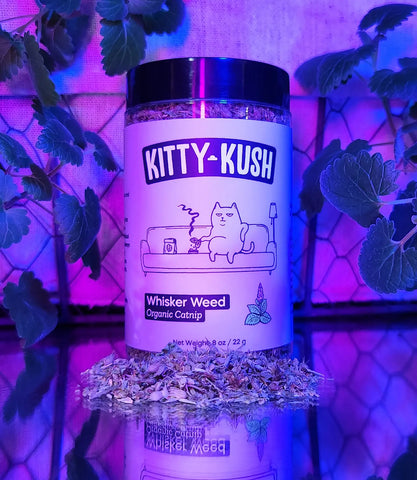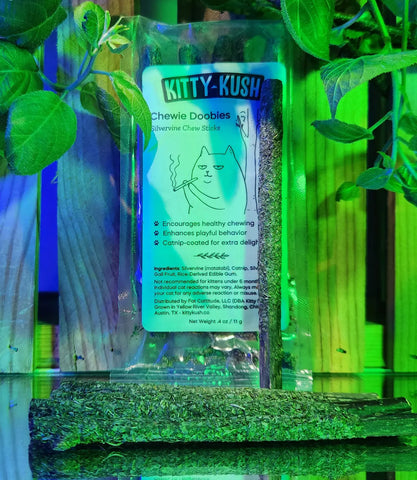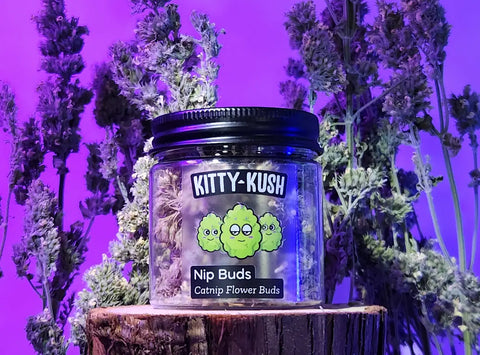Catnip and catmint, both members of the Lamiaceae or mint family, often cause confusion among gardeners and cat enthusiasts alike. While both can add beauty to your garden and intrigue to your kitty's life, understanding their differences is key. This article will delve into the specifics of catnip, or Nepeta cataria, and catmint, exploring their individual characteristics and how they affect our feline friends, and will discuss why cats like catnip.
Understanding Catnip and Catmint
What is Catnip (Nepeta Cataria)?
Catnip, scientifically known as Nepeta cataria, is a perennial herb native to Eurasia but now found widely across North America. It's characterized by its square stems, a hallmark of the mint family, and its grayish-green, heart-shaped leaves. The plant produces small, white or pale purple flowers that attract pollinators. But what truly sets catnip apart is its profound effects on cats, thanks to a special compound in catnip called nepetalactone.
What is Catmint?
Catmint, also belonging to the Nepeta genus, encompasses a range of species, each with its unique characteristics. Unlike catnip, which primarily refers to Nepeta cataria, catmint describes several other closely related plants. While many catmints share a similar appearance to catnip, with square stems and aromatic leaves, their potency and effects on cats can vary significantly. Some catmints might evoke a mild interest in domestic cats, while others have little to no effect.
Differences Between Catnip and Catmint
The key difference between catnip and catmint lies in the concentration of nepetalactone, the compound in catnip responsible for its captivating effects on cats. Catnip's leaves typically contain a much higher concentration of this oil than catmints, resulting in a stronger and more pronounced reaction to catnip. While some cats like catnip, their responses can vary wildly. It is also worth noting that catmint is often chosen for its aesthetic value as a garden plant, due to its longer blooming period and more diverse range of flower colors, with the additional benefit of being a natural repellent for certain insects.
Why Cats Like Catnip
How Cats React to Catnip
The effects of catnip on domestic cats are fascinating and varied. When a feline encounters catnip, the reaction to catnip is often immediate and pronounced. Many house cats will display signs of euphoria, such as rubbing their face and body on the catnip plant, purring, drooling, and generally exhibiting playful, even frenetic cat behavior. Some cats like catnip so much they will roll around in it. The intensity of these catnip effects typically lasts for about 5 to 15 minutes.
The Science Behind Cats Liking Catnip
The reason why cats like catnip lies in the compound in catnip called nepetalactone. This herbaceous chemical binds to receptors in a cat's nose, stimulating sensory neurons that trigger a response in the brain. This response affects regions associated with mood and behavior, causing a temporary state of altered perception and excitement. Interestingly, it's believed that nepetalactone mimics feline pheromones, thus explaining why cats love it. The potency of the catnip is a factor too.
Not All Cats Respond to Catnip
While many cats like catnip, not all felines are susceptible to its allure. The ability to react to catnip is an inherited trait, meaning some kittens are genetically predisposed to respond, while others are not. Approximately 20-30% of domestic cats do not show any reaction to catnip. Furthermore, the catnip effects are not typically observed in very young kittens, as they have not yet developed the necessary receptors to process nepetalactone. It also should be noted that big cats like lions can also be affected by catnip.
Growing Catnip and Catmint
Best Conditions for Growing Catnip
Catnip, or Nepeta cataria, is an herb that is relatively easy to grow. As a perennial, it thrives in sunny locations with well-drained soil, typically growing 2 to 3 feet tall. The plant prefers a neutral to slightly alkaline soil pH. Catnip's hardy nature allows it to tolerate a range of conditions, including drought, once established. Starting a catnip plant from seed is possible, but transplanting seedlings often yields quicker and more successful results. The information from Wisconsin Horticulture says it's easy to grow.
Planting and Caring for Catmint
Catmint, while similar, has slightly different needs. Most catmints also prefer full sun but can tolerate partial shade. They are equally adaptable regarding soil, thriving in well-drained conditions. One of the advantages of growing catmint is its resilience to pests and diseases. Regular pruning after flowering can encourage a second bloom and maintain a neat appearance. Some varieties are chosen as a repellent, and the Lamiaceae plant makes a visually appealing addition to any garden.
Common Issues When Growing Catnip
Despite being relatively easy to grow, catnip can encounter certain issues. Overwatering can lead to root rot, so ensuring proper drainage is crucial. Pests like aphids and spider mites can sometimes infest the plants, but they are usually manageable with insecticidal soap or neem oil. One common problem is that domestic cats and even kitty from the neighborhood might become overly attracted to your catnip plant, potentially damaging it with their enthusiastic rubbing and playing. It is usually a good idea to protect the catnip plant, especially when young.
Using Catnip with Your Cats
How to Give Catnip to Your Cat
There are many ways to give catnip to your cat and to use catnip. One popular method is to simply offer dried catnip in a small dish or sprinkle it on the floor. You can also rub catnip on your cat's favorite toys to make them more enticing. For domestic cats that are new to catnip, start with a small amount to gauge their reaction to catnip. Some owners create a catnip tea by steeping dried catnip in warm water and then spraying the liquid on toys.
Popular Catnip Products: Toys and Pillows
The market offers a variety of catnip toys designed to engage your feline friend. These catnip toys often contain dried catnip inside, releasing the aroma as your kitty plays. Catnip-infused pillows are another popular choice, providing a comfortable and stimulating resting place. You can even find scratching posts treated with catnip to encourage healthy scratching habits. When selecting catnip products, ensure they are made from safe, non-toxic materials to protect your domestic cats.
Can Cats Overdose on Catnip?
While cats love catnip, and it is generally considered safe for cats, it is technically possible for domestic cats to overdose on catnip, though it's extremely rare and not usually life-threatening. Overconsumption of catnip may lead to temporary side effects such as vomiting or diarrhea. However, the effects of catnip are usually short-lived. It is important to monitor your kitty when they are playing with catnip, and provide some rest after. Always provide catnip in moderation.
Other Considerations
Can Kittens Enjoy Catnip?
Young kittens typically do not respond to catnip until they are several months old. The compound in catnip, nepetalactone, requires specific receptors that are not fully developed in very young kittens. Usually, kittens under six months are not affected by catnip. Introducing catnip too early may not have the desired effects of catnip and may even be confusing or overwhelming for the young feline. Always consult with your veterinarian.
Do Cats Eat Catnip?
Yes, cats eat catnip, and it's generally safe for them to do so. While most cats like catnip primarily enjoy the scent, some domestic cats will nibble on the catnip plant or dried leaves. Eating catnip can have a mild sedative cat behavior effect on some cats, leading to a more relaxed state. As long as catnip is given in moderation, there are no health concerns associated with a feline ingesting it.
Creating a Cat-Friendly Environment with Catnip
Catnip can be a valuable tool for creating a more enriching environment for your domestic cats. You can use catnip to encourage exercise by placing catnip toys in different areas of your home. It can also help reduce stress and anxiety, especially in multi-cat households. By incorporating catnip into your kitty's environment, you can enhance their overall well-being and provide them with hours of entertainment. You can also place the catnip plant in the sun, because cats like sun.






